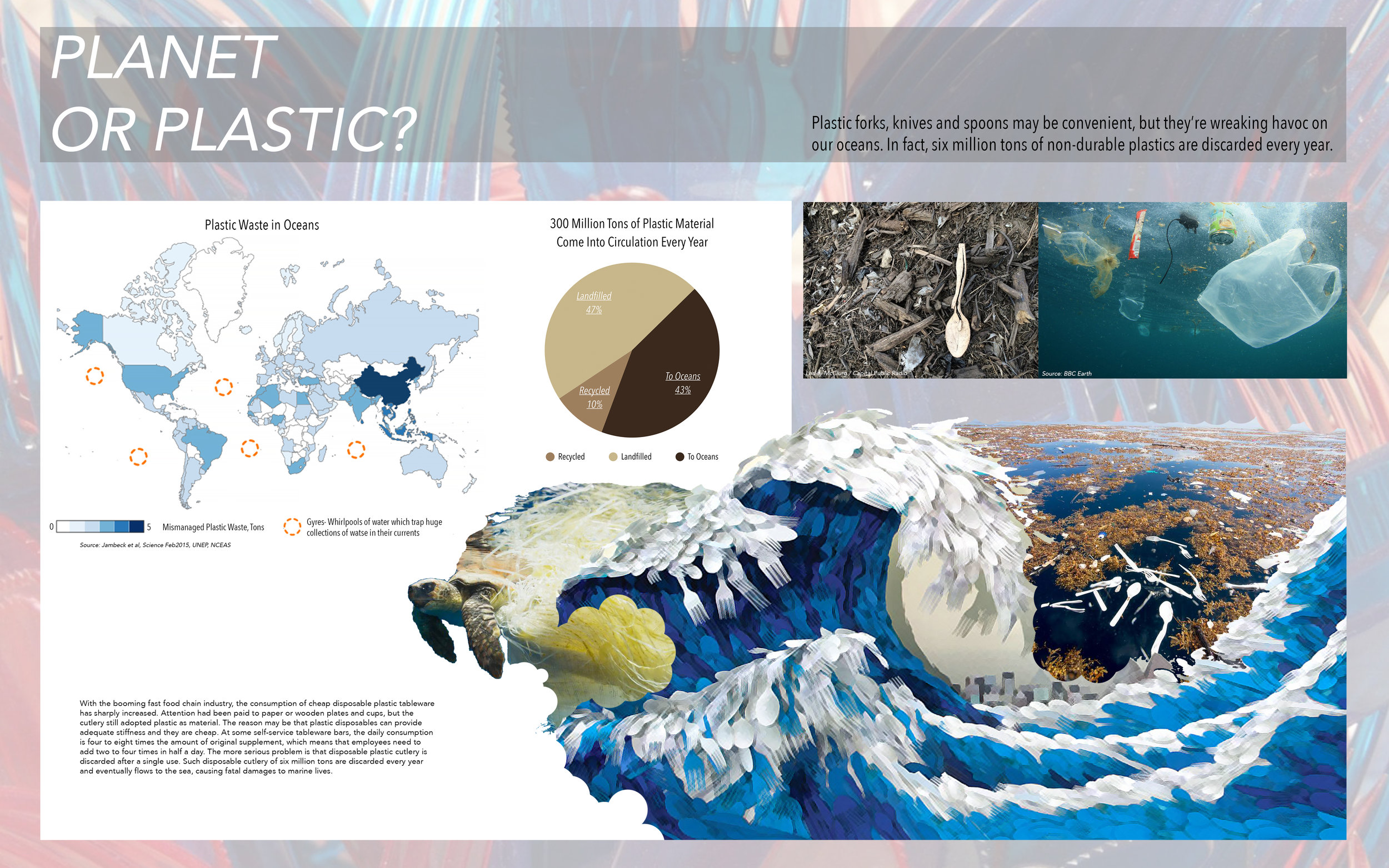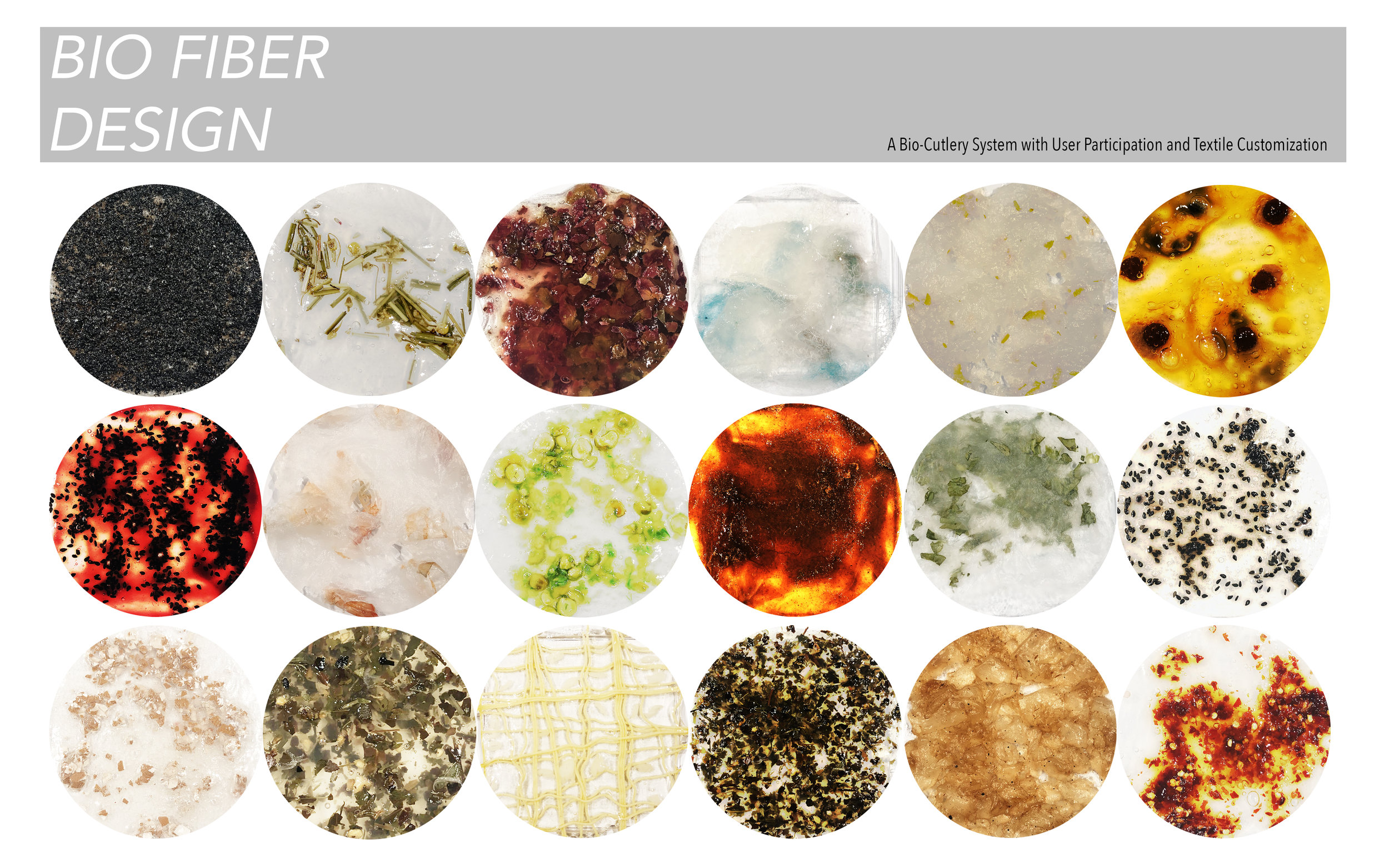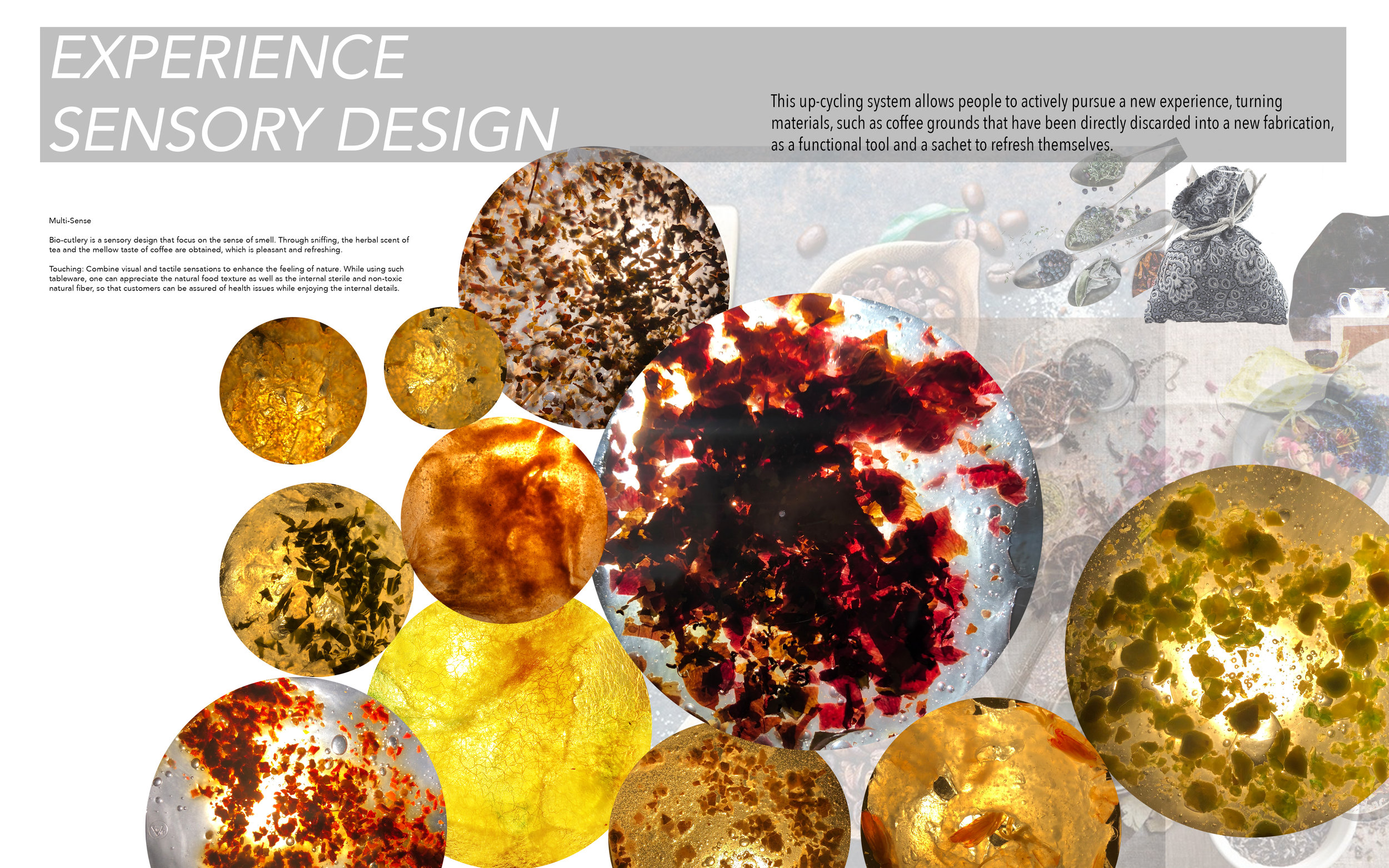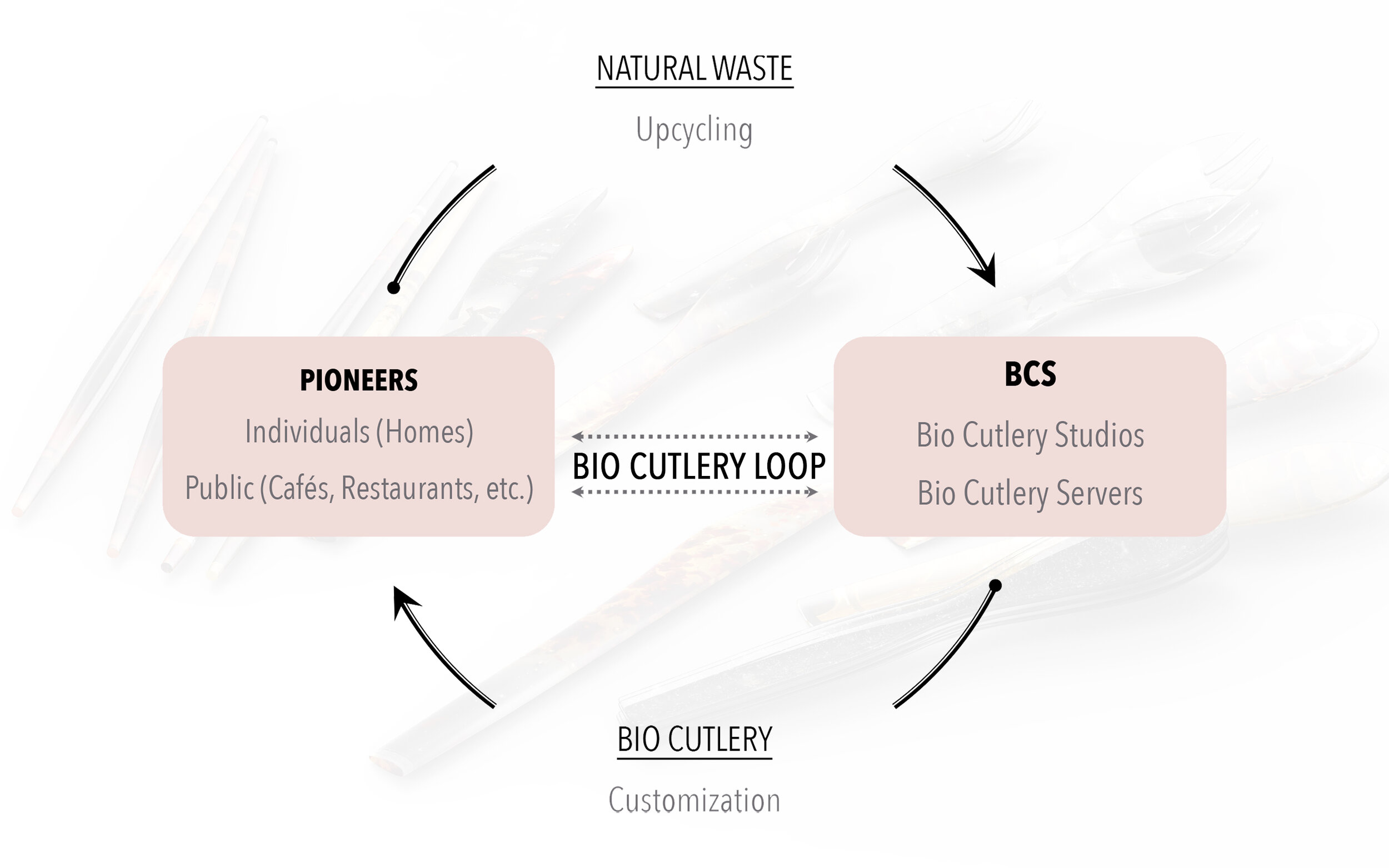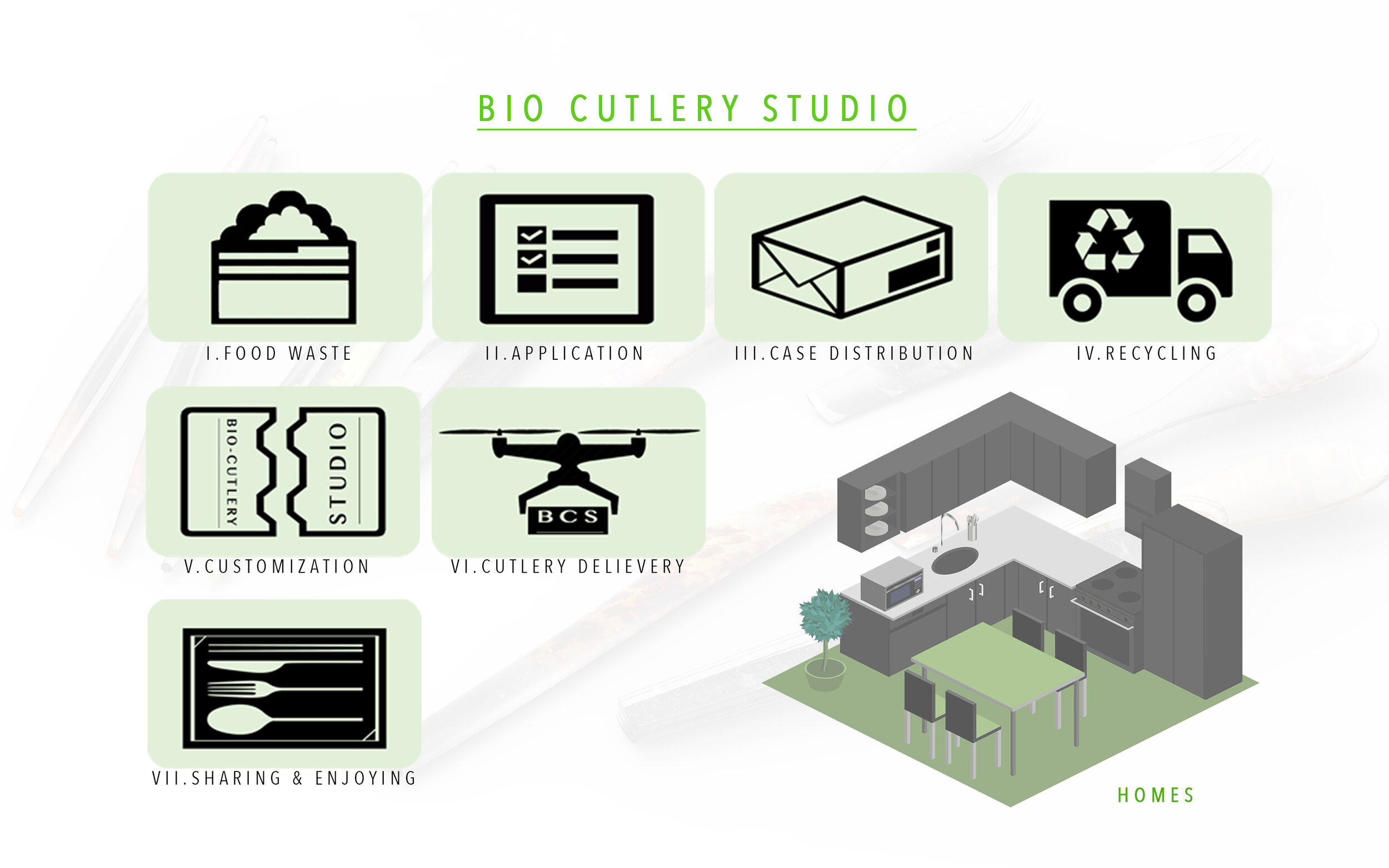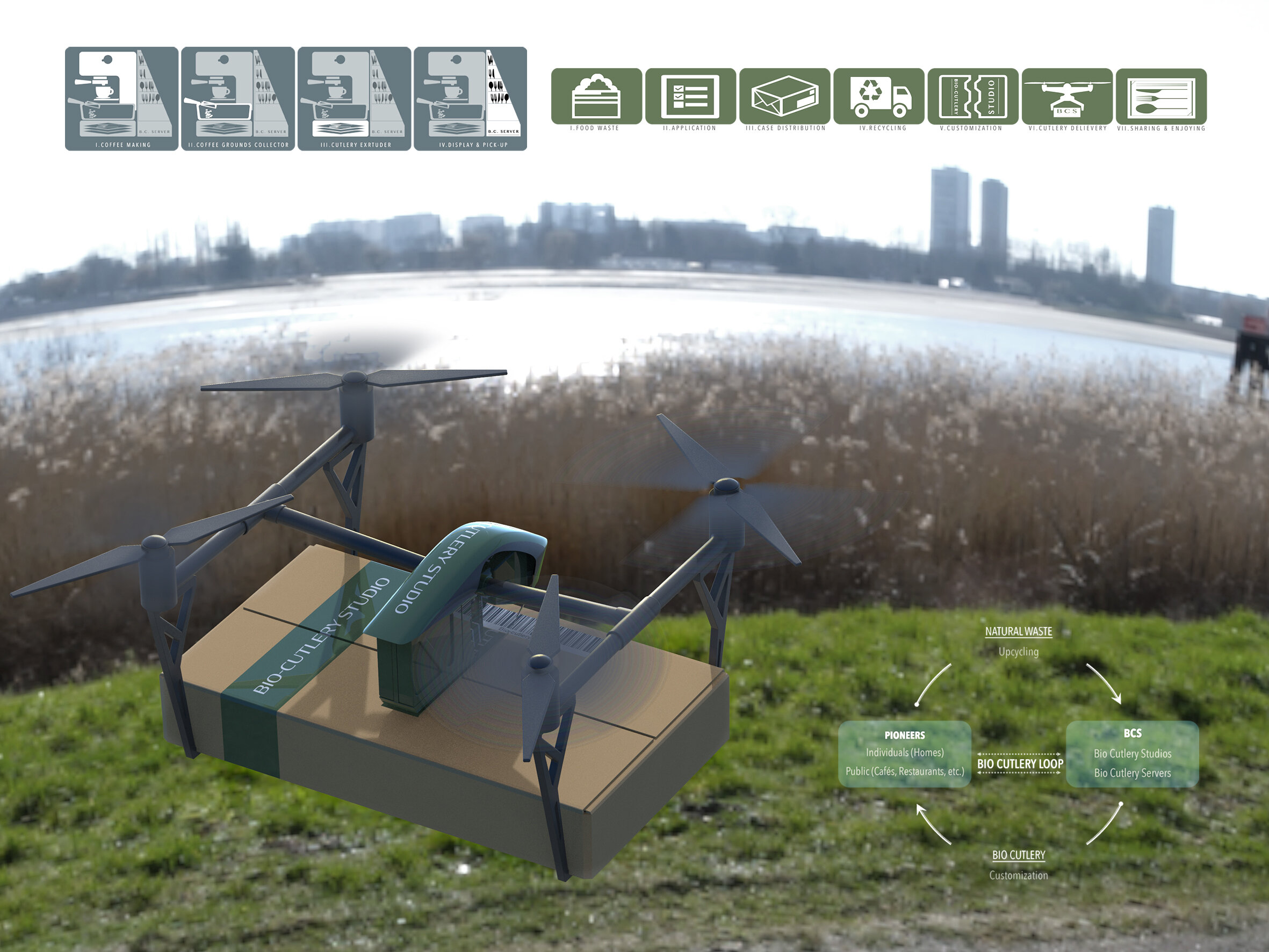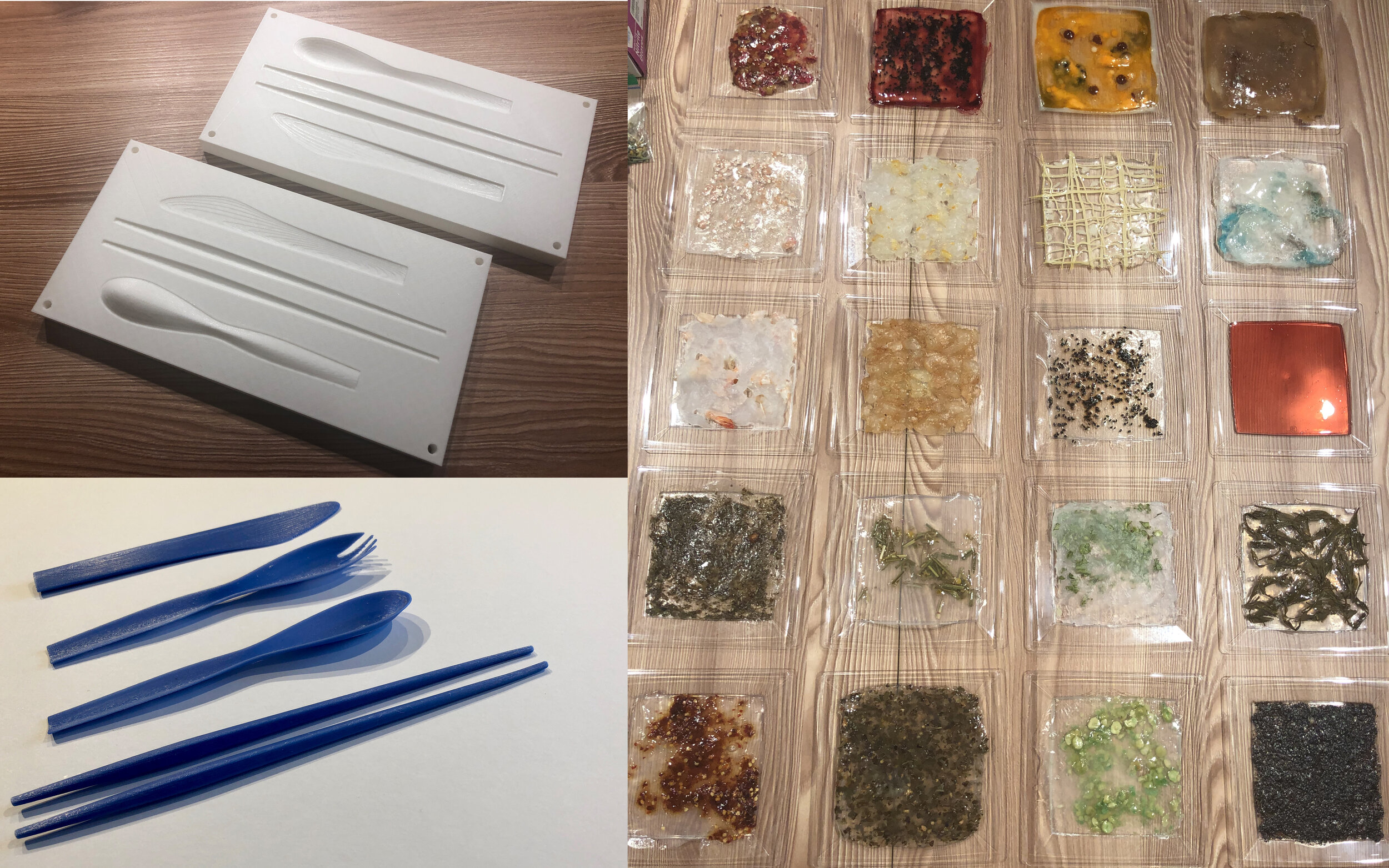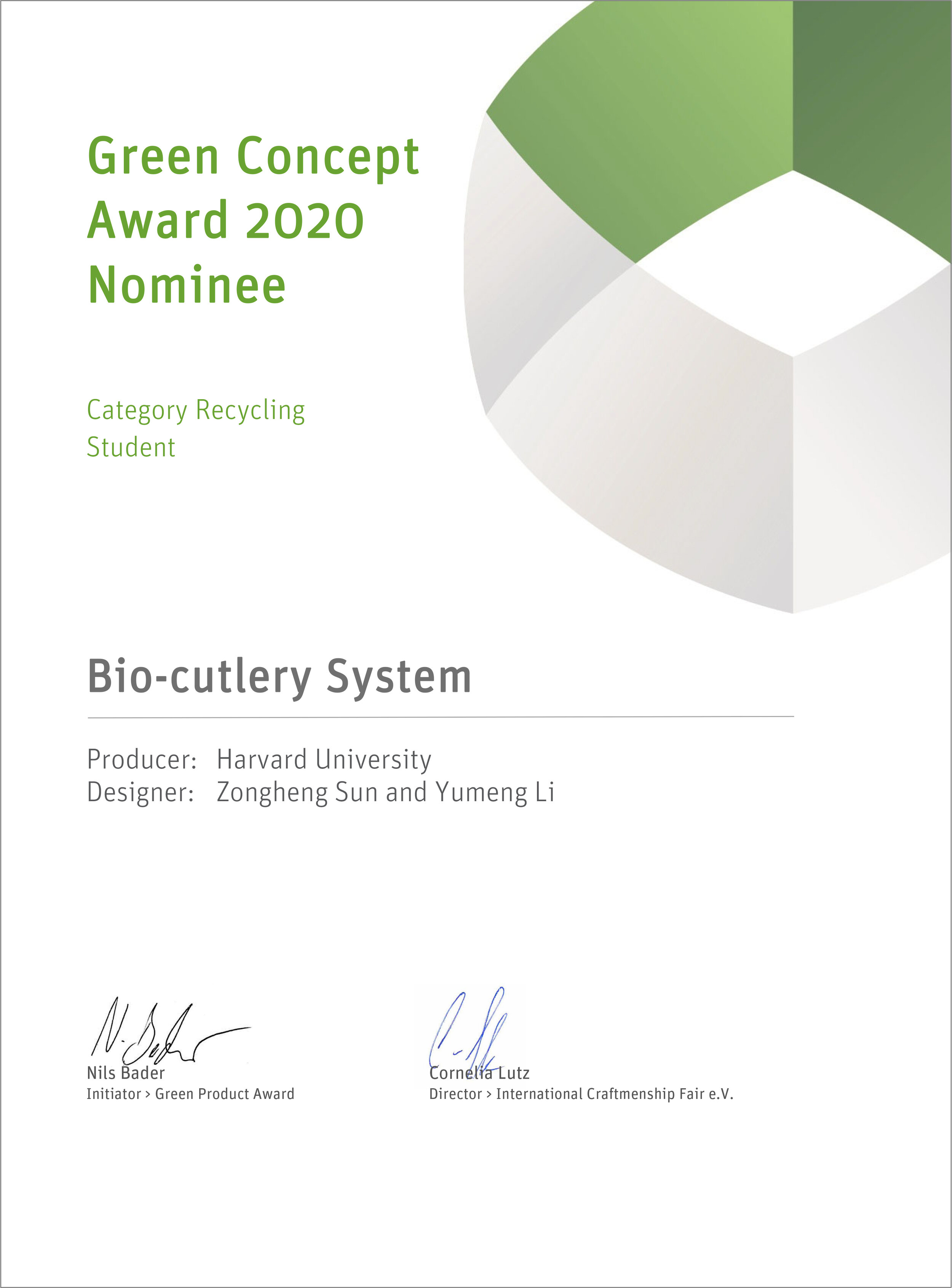Textile Design | System Design
PEAR & MULBERRY, 2019
Green Concept Award 2020
Keywords: Sustainability, Material, Eco-plastic, 3D print, Hand-made mock-up
PLANET OR PLASTIC?
Plastic forks, knives and spoons may be convenient, but they’re wreaking havoc on our oceans. In fact, six million tons of non-durable plastics are discarded every year. With the booming fast food chain industry, the consumption of cheap disposable plastic tableware has sharply increased. Attention had been paid to paper or wooden plates and cups, but the cutlery still adopted plastic as material. The reason may be that plastic disposables can provide adequate stiffness and they are cheap. At some self-service tableware bars, the daily consumption is four to eight times the amount of original supplement, which means that employees need to add two to four times in half a day. The more serious problem is that disposable plastic cutlery is discarded after a single use. Such disposable cutlery of six million tons are discarded every year and eventually flows to the sea, causing fatal damages to marine lives.
WASTE OR HERITAGE?
Meanwhile, the top two world popular beverages with rich cultural heritage: tea and coffee are actually accompanied by huge wastes. On one hand, they are carefully selected for social occasions and daily meals. On the other hand, the coffee and tea residues produced are considered to have no value but directly dumped into the trash. Tea ceremony has more than ten steps, each step is exquisite and elegant, while the soaked tea leaves are not written into this process at all. Such waste is regrettable that people actually have not fully experienced the textile (touching, sniffing, vision balance and taste) of tea and coffee. Therefore, what if we could recycle these materials elegantly, while bringing a larger environment benefit?
Comprehensively, the concept that bio-cutlery made from coffee grounds/tea leaves and other biodegradable reinforced fibers, and a user participated recycling system becomes a thing.
EXPERIENCE SENSORY DESIGN
This up-cycling system allows people to actively pursue a new experience, turning materials, such as coffee grounds that have been directly discarded into a new fabrication, as a functional tool and a sachet to refresh themselves.
Multi-Sense: Bio-cutlery is a sensory design that focus on the sense of smell. Through sniffing, the herbal scent of tea and the mellow taste of coffee are obtained, which is pleasant and refreshing.
Touching: Combine visual and tactile sensations to enhance the feeling of nature. While using such tableware, one can appreciate the natural food texture as well as the internal sterile and non-toxic natural fiber, so that customers can be assured of health issues while enjoying the internal details.
PROTOTYPING THE FUTURE
To apply the texture formed by natural materials to the cutlery is a fresh idea. The transparency of the cutlery as a tool: make people clearly see the internal structure, together with food, forming a special taste memory of eating experience.
UPCYCLING A BETTER FUTURE
Our concept includes a recycling system which named Bio-cutlery Loop System. With the services like Bio-cutlery Studio and Bio-cutlery Server, the system will cover most homes and public cafes in the future to get people involved in the actions to make our planet a better place for all.
The Bio-cutlery Server will be embedded with commercial coffee machine with minimum changes, but enables the coffee grounds to be recycled directly and made into cutlery for customer to use. Coffee chain brands like Starbucks could implement Bio-cutlery Server in order to illustrate the idea of protecting the marine environment, as well as attracting more customer by embracing a sustainable concept.
Also, families can also join this system by signing up for Bio-cutlery Studio program, which provides customized cutlery by using food waste collected at home. The collection and delivery will be conducted by Express and BCS Drones. In this way, autonomy and efficiency will leverage the switch to a more sustainable future.
In the longer term, BCS creates an interaction between individual contributions and social responsibility, so that each individual and group can directly participate in the important aspects of protecting the environment and promote the solution of the world's toughest environmental problems.


